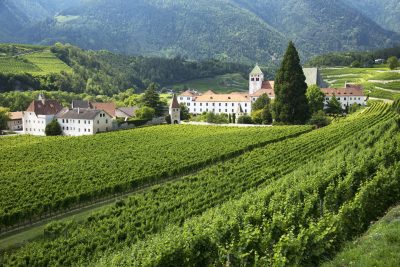 Abbazia di Novacella. The abbey/winery’s vintages have been the inadvertent beneficiary of climate change. Copyright Hannes Ochsenreiter.
Abbazia di Novacella. The abbey/winery’s vintages have been the inadvertent beneficiary of climate change. Copyright Hannes Ochsenreiter.
It seems like everyone in the wine industry is longing for the days of old with little regulation, with minimal thoughts of sustainability. In the United States, global warming is denigrated to the fringe areas and wrested from the hands of the scientists. Throw in tariffs that seem to change daily with the severity or even the target producer or country and longing for an easier time would seem natural.
Frankly, winemakers and grape growers should be on the leading edge of climate change. In most wineries and wine regions, there are specific day-to-day weather reports going back many decades, and it is undeniable. Bud break, flower expansion, veraison (seasonal color change in the grape) and harvest dates have been accelerated and compressed, forcing harvest to pre-optimal conditions far short of the proper hang time and flavor development on the vine.
The wine regions situated in those eco-friendly areas that began supporting proper vine growth and grape development decades ago are nonetheless having to juggle, blend and invest in higher altitude plots or higher latitude acreage. However, if your vineyard were at the northern edge of grape cultivation back then, global warming has come to the rescue and more northern climes are finally ripening to their happy spot.
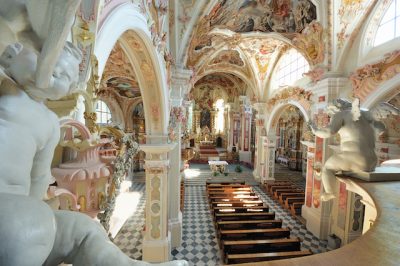 The Basilica of Santa Maria Assunta, part of the Abbazia di Novacella, was built by Antonio Guseppe Sartori in 1773 and offers a superb illustration of the Rococo style. Copyright Albert Ceolan.
The Basilica of Santa Maria Assunta, part of the Abbazia di Novacella, was built by Antonio Guseppe Sartori in 1773 and offers a superb illustration of the Rococo style. Copyright Albert Ceolan.
I was recently invited to a media wine luncheon at Aqua, a beautiful restaurant serving Italian and Japanese dishes from one kitchen in the Flat Iron district. It curated a wine-pairing of fresh flavors, creatively pulling them from various cuisines to enhance the wines. The host winery was Abbazia di Novacella in northern Italy, quite close to the German and Austrian borders. It is one of the northernmost wineries, not only in the Alto Adige region but in all of Italy. I had never tasted these wines before, and they did not disappoint. All of the grapes for their 900,000-bottle annual production are hand harvested, with subsoils of schist, granite and limestone contributing to stoney, mineral and flinty notes.
Abbazia di Novacella began life as an Augustinian monastery in the year 1142. It still is. The monks plant grapes for local and personal consumption, and they learned a few things over the centuries. In the year 1623, they realized their location would not allow for proper maturation of red grapes. Abazia di Novacella purchased more southerly vineyards to be their epicenter for red wine production. Today, the monastery, the vineyards, the winery and a museum are all available for tours by appointment, and get a healthy share of visitors.
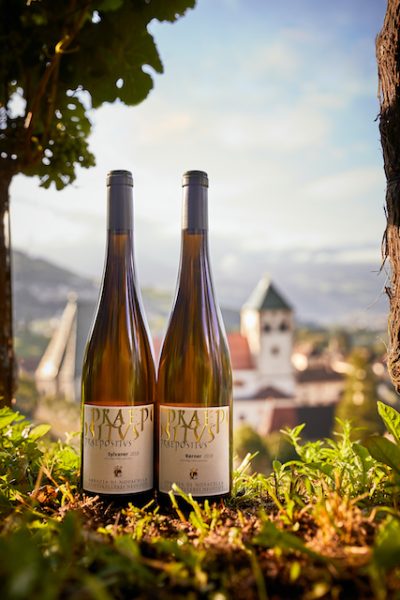 Praepositus wines. Copyright Andreas Tauber.
Praepositus wines. Copyright Andreas Tauber.
Our first two wines, paired with a sushi dish of Hamachi, were brilliant. The 2024 Alto Adige Valle Isarco DOC Sylvaner showed abundant lemon zest and perfumy aromatics. The Alto Adige Valle Isarco DOC Gruner Veltliner Praepositus from 2023 was structured with citrus that included Valencia orange and was simply lovely. (The Praepositus line uses specific vineyards of particular quality for small scale production of something special.)
Our next pour was the 2023 Alto Adige Isarco DOC Kerner Praepositus. This wine — fresh citrus, balanced and puckery Meyer lemon – should not be overlooked. The 2021 Alto Adige Valle Isarco Pinot Nero (Noir) Praepositus offered up aromatic red fruit and fresh raspberry, with a dry spiciness. For these, the kitchen prepared pan-seared Maine scallops and green peas celeriac – quite perfect side by side.
Our final wine was the Alto Adige Isarco DOC Moscato Rosa from 2022. This was clearly a dessert wine with the jammy pleasantness of Concord grape essence and ripe red roses. The Aqua kitchen paired this wine with Burrata roasted beets, walnuts, honey and thyme.
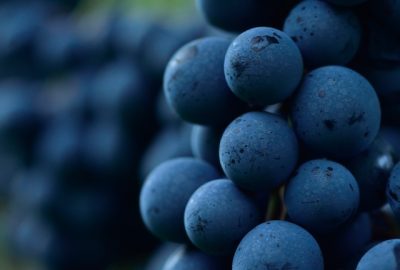 Copyright Albert Ceolan.
Copyright Albert Ceolan.
One final thought here: Italian wine labels can be a bit difficult to understand. These Abbazia di Novacella labels are simple. The vintage year is clear. Alto Adige is the wine region. Isarco is the subregional valley. And the grape variety is on the front label, easy to find.
Abbazio di Novacella ‘s Sylvaner, Grüner, Veltliner and Kerner vintages are all made from beautiful and nuanced white grapes that, in the right hands, will bring you to some lovely flavors. Look for these and explore.

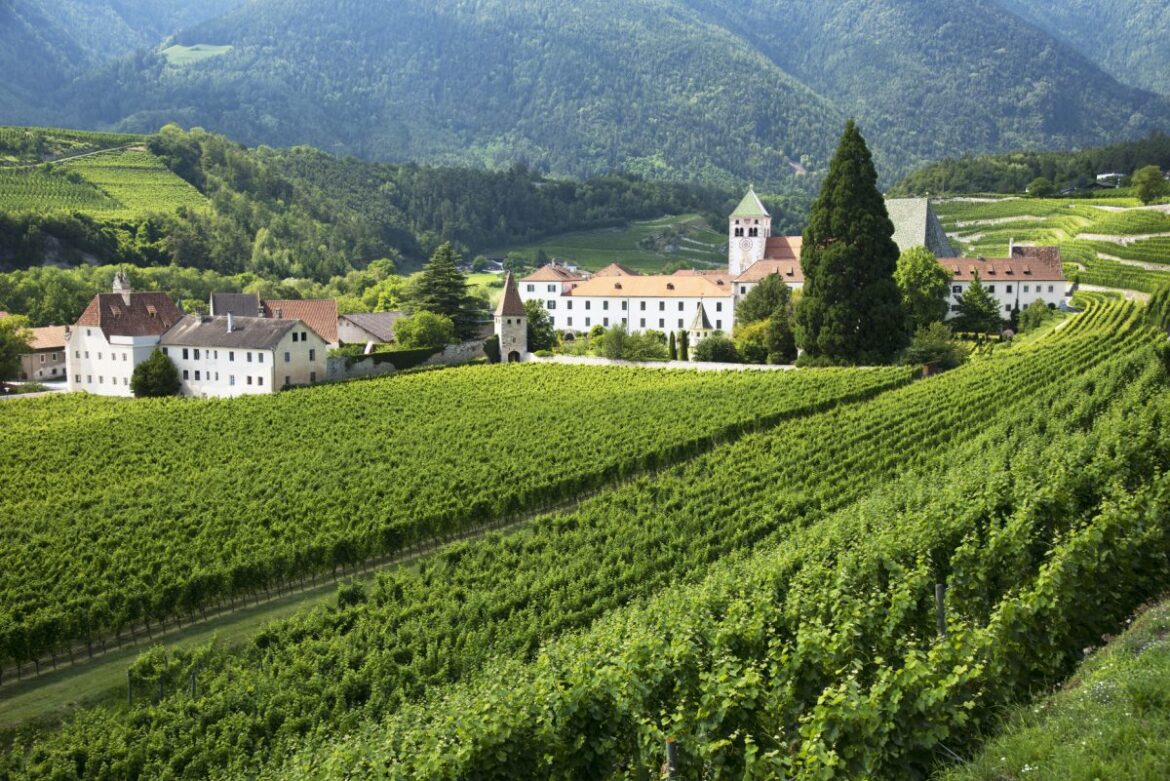
Dining and Cooking